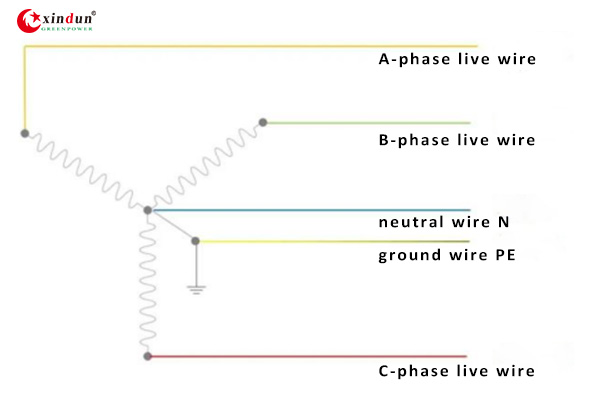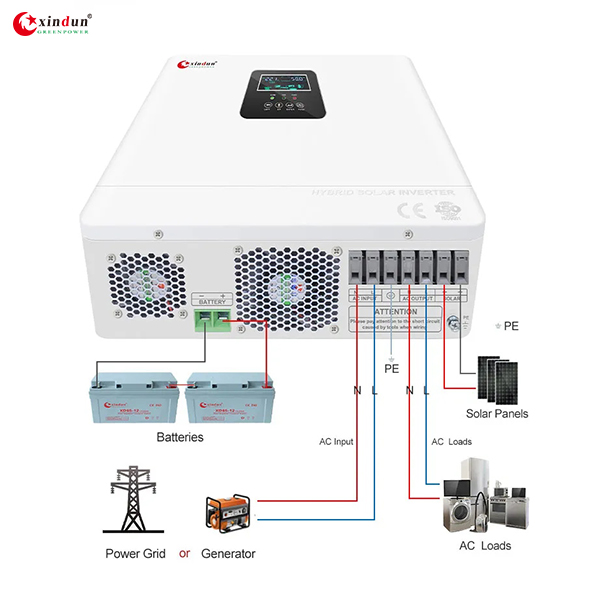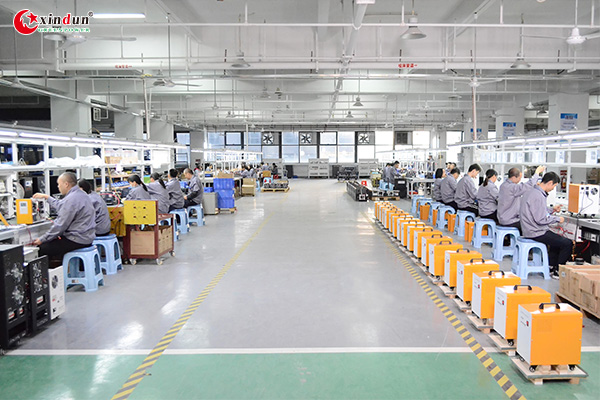
Solar inverters are most commonly used in solar power systems, where the direct current generated by solar panels is converted into alternating current, which can be used by electrical appliances. But what is the difference between single phase and three phase inverter?
First of all, let's understand, what is' phase '? The term 'phase' refers to three-phase live wires (A/B/C or L1/L2/L3). Transformers generally output three live wires and one neutral wire (N wire), and some may also lead to a ground wire (PE).

So what are single phase and three phase inverters?
●Single phase solar inverter
Inverters convert direct current into alternating current for output, while single phase solar inverter convert the output AC voltage to single phase, such as AC 220V or 230V. (Different countries and regions have different output voltages)
There are three sockets at the interface of the single phase solar inverter, labeled as "N", "L", and "PE":
L represents the live wire (marked with the letter 'L' Live Wire) in red or brown;
N represents the neutral wire (marked with the letter 'N' Neutral wire) with a blue or white line;
PE represents the ground wire (marked with the letter 'E'Earth) with yellow and green alternating lines.

Single phase solar inverters are typically used for small-scale power generation, such as in solar systems for individual houses. Single phase electricity is usually used for household lighting and small appliances. Single phase solar inverters are usually cheaper than three phase solar inverters because their design is simpler.
Single phase solar inverters can determine the optimal operating point of solar panels, which helps to maximize power generation.
In addition, single phase solar inverters can be used to connect solar panels in parallel, simplifying the installation process and reducing overall costs.
A three phase solar inverter converts the output AC voltage to three phase, such as AC 380V or 400V. The three phase electricity is composed of three AC potentials with the same frequency, equal amplitude, and 120 ° phase difference in sequence.
The interface of the three phase solar inverter has five holes, namely A, B, C, N, and PE. According to the provisions of the national standard GB7947-2010, in three-phase circuits, phase A is yellow, phase B is green, phase C is red, and N represents the zero line. Blue or white lines are used; PE represents the ground wire, using yellow and green alternating lines. A. B and C three phase are sometimes represented as L1, L2, L3, or U, V, W, respectively.
A simple summary is: 5-hole interface, 400V voltage level.
When installing three phase solar inverter, it is common to hear three-phase four wire and three-phase five wire. After saying "phase", let's talk about "line". There are several common types:
◆ Single phase double wire: one live wire+one neutral wire.
◆ Single phase three wire: one live wire+one neutral wire+one ground wire.
◆ Three phase three wire: Three live wires, mostly for lines above 10KV.
◆ Three phase four wire: three live wires+one zero wire, mainly used for 380V/220V (400V/230V) low-voltage lines. The working zero wire N is also used as the grounding protection wire PE, which can be called the protective neutral wire and represented by NPE. It is suitable for electric fields with basic balance of three-phase loads.
◆ Three phase five wire: a power supply system with three live wires, one zero wire, and one ground wire, which strictly separates the working zero wire N from the dedicated protective wire PE. It is used in places with high safety requirements and grounding requirements for electrical equipment.
Three phase solar inverters are typically used for larger scale power generation, such as solar systems in commercial or industrial buildings. Three phase electricity is typically used in power systems for large buildings, factories, and other industrial applications.
Three phase solar inverters are more efficient than single phase solar inverters because of the way they distribute loads in three-phase power. This helps to reduce the energy wasted through heat dissipation.
In summary, the main difference between single phase and three phase inverter is their power output capability. Single phase solar inverters are suitable for small solar power systems, while three phase solar inverters are suitable for large commercial or industrial systems. Single phase solar inverters are usually cheaper, while three phase solar inverters are more efficient. When selecting inverters for solar power systems, it is important to consider the specific requirements of the system, as well as budget and energy efficiency.

▲Xindun Power-Single phase solar inverters factory
▲Xindun Power-Three phase solar inverters factory
Xindun Power has a deep accumulation of production technology in the inverter field, and currently has the most complete inverter product series and energy solutions in the industry, covering single phase, three phase, high frequency,and low frequency 200W-160KW inverters and energy storage battery products, which have been consistently recognized by customers at home and abroad. Welcome to cooperate with Xindun Power to expand your product line and expand the global inverter market!